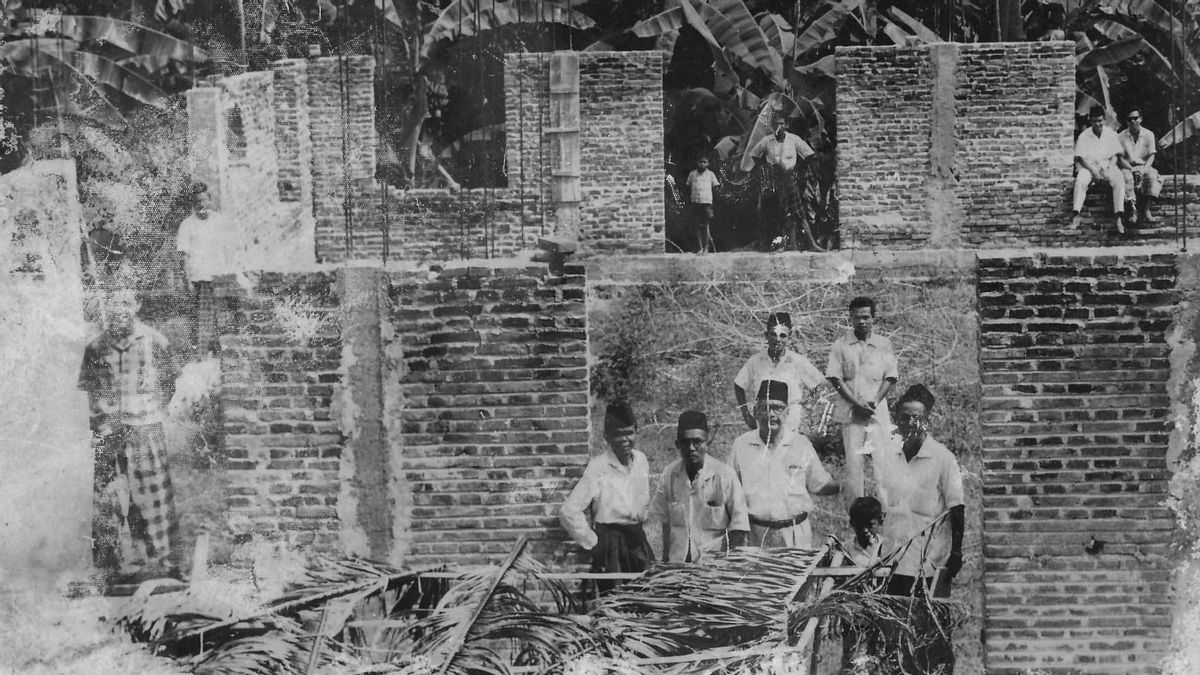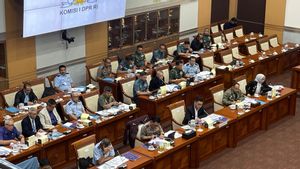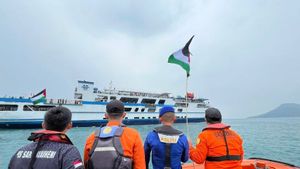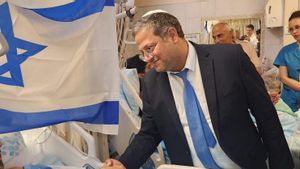JAKARTA - Muhammadiyah is part of Indonesian history. His contribution as a carrier of modernity in Islam cannot be taken lightly. In the hands of its founder, Kiai Haji (KH) Ahmad Dahlan, Muhammadiyah became a large Islamic mass organization. Moreover, Muhammadiyah stands with a breath of amar ma'ruf nahi munkar and tajdid (renewal). The movement is not just religious breathing. Muhammadiyah has joined in advancing the field of education. Mainly in eradicating backwardness, ignorance and poverty among the native people.
Historically, Muhammadiyah was founded on November 18, 1912 in Kauman Village, Yogyakarta. Muhammadiyah was founded right after KH. Ahmad Dahlan from the Holy Land. In Mecca, the man whose real name is Muhammad Darwis, has inherited the knowledge he got from studying religion and living with local scholars. What he can then do in his hometown.
For KH. Ahmad Dahlan, the intention of establishing Muhammadiyah was none other than to combat mystical practices as well as to fight poverty due to Dutch colonialism. All of this is present in the form of caring for others.
According to Ridho Al-Hamdi in the Muhammadiyah Political Paradigm book (2020), the teachings shared by KH. Ahmad Dahlan in Muhammadiyah all breathed critical reflections on the verses of the Koran combined with glancing at the problems of the times.

KH. Ahmad Dahlan used the Koran as inspiration to form Muhammadiyah which grew into a reformist-modernist movement. This movement was able to enlighten and advance science and technology in fighting poverty and ignorance, especially in its homeland, Yogyakarta.
"In this context, KH. Ahmad Dahlan taught his students surah Al-Ma'un repeatedly. Of course the students asked. He then took his students to the market and bought their daily necessities of life, then went to the places of the poor and gave these items to them, "wrote Ridho Al-Hamdi.
This step then raised the name Muhammadiyah to echo in Yogyakarta. Moreover, the entire program that was presented by Muhammadiyah at that time was more or less directed at efforts to liberate and empower the poor and marginalized. These efforts started with small efforts, then continued to be strengthened to create synergy and cooperation with various parties in the union.
"Abundant human resources, available financial resources, as well as existing facilities and infrastructure, including organizational networks, must be optimized as much as possible for the movement for liberation, empowerment and community progress," said Fajar Riza Ulhaq and friends in the book Advancing Islamic Cosmopolitanism ( 2015).
Spirit helps others
Since Muhammadiyah was founded, KH. Ahmad Dahlan often invited his students to take care of poor orphans. The spirit of partisanship with the people who has no one becomes the spirit and breath of the Muhammadiyah movement. Because of that, Surah Al-Ma'un is legendary and is imprinted in every niche of Muhammadiyah activists from the past until now.
The real form is to support orphans and abandoned children. As quoted by Sutrisno Kutoyo in the book Kiai Haji Ahmad Dahlan and Persyarikatan Muhammadiyah (1998), the donation of orphans and the presence of this orphanage became an effort and practice from an early age carried out by Muhammadiyah.
KH. Ahmad Dahlan intervened and immediately made his students realize that the Surah Al-Ma'un must be practiced properly. "Because of that, KH. Ahmad Dahlan led a movement to nurture and educate orphans. The urge to support orphans also comes from the values of the teachings of the holy Koran. Apart from Surah Al Ma'un, also Surah Al Baqarah which contains teachings to help orphans, ”wrote Sutrisno Kutoyo.

In addition to the orphanage beach, Muhammadiyah also presents a hospital for the poor. In addition, there were also a number of educational activities for the poor. Moreover, the active Muhammadiyah women's organization, which was later known as Aisyiah in 1922, added to Muhammadiyah's struggling power in the world of education.
"Muhammadiyah women, who later became known as Aisyiah, in 1922 had activities, among others, in the afternoon gathering workers in the city of Jogja to be provided with work skills and work ethics based on Islamic teachings. From here came Wal-Ashri and Muballighin recitation which later developed into FIAD (Faculty of Religious Sciences, Department of Da'wah), the embryo of Muhammadiyah Yogyakarta University which was born in the 1980s, "added Abdul Munir Mulkhan in the book Marhaenis Muhammadiyah (2010).
Not only that, Muhammadiyah activists are also required to go directly to the source of the problem. Among other things, about limited education, limited employment opportunities, limited facilities and infrastructure in rural areas. Therefore, Muhammadiyah increases service by sending its experts. They come to develop rural potential, in the form of increasing human resources and natural resources.
For his contribution, the first Indonesian President, Soekarno, who was active in Muhammadiyah when he was exiled in Bungkulu, admitted he was amazed. Muhammadiyah, said Bung Karno, had dared to emerge to modernize the way to develop Islam throughout the archipelago. The common understanding between Muhammadiyah and Bung Karno in eradicating poverty is the basis for continuing to support the Islamic organizations founded by KH. Ahmad Dahlan grew up.
"As someone who has been involved in Muhammadiyah circles, I advise you to always stick to the motto 'Many Work'. This is why: Muhammadiyah reverberates and becomes big," concluded Bung Karno.
The English, Chinese, Japanese, Arabic, and French versions are automatically generated by the AI. So there may still be inaccuracies in translating, please always see Indonesian as our main language. (system supported by DigitalSiber.id)













